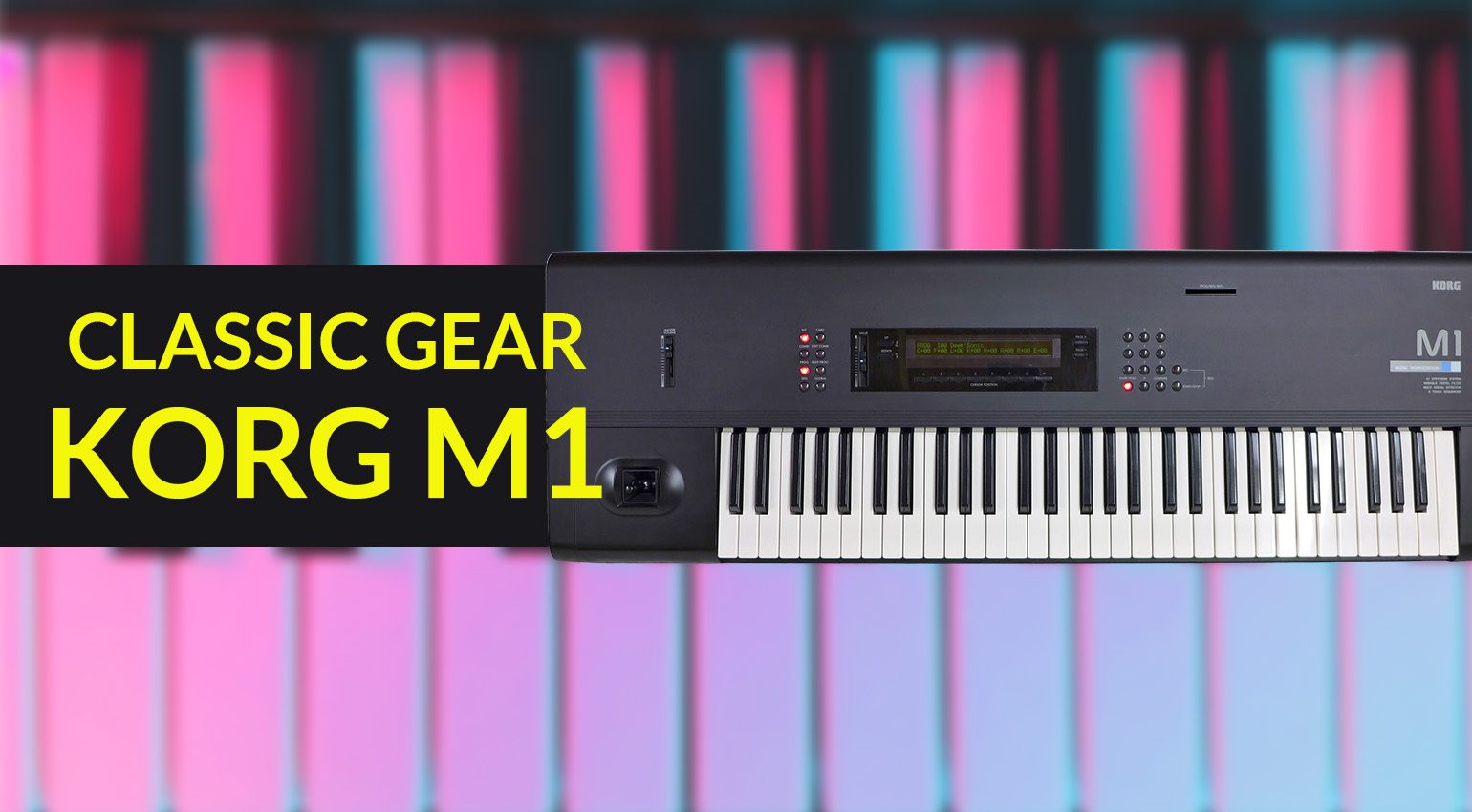Is Korg’s sample-based workstation, the M1, still pertinent in the 21st century, despite its historic success as one of the top-selling synthesizers alongside Roland’s D-50? It effectively transitioned away from analogue synthesis, ushering in an era of sleek digital music.
Korg M1
Direct your attention (including both sight and hearing) to the late 1980s. The competition to pioneer a novel form of digital synthesis had been underway since 1983, when Yamaha introduced the DX7 to the market. Despite the popularity of frequency modulation (FM), it was unavailable due to Yamaha’s exclusive patent rights. Sample synthesis emerged as the dominant trend, culminating in Roland’s release of the widely acclaimed D-50 in 1987. However, Korg elevated the competition the subsequent year with the introduction of one of the most renowned synthesizers in history: the M1 Music Workstation.
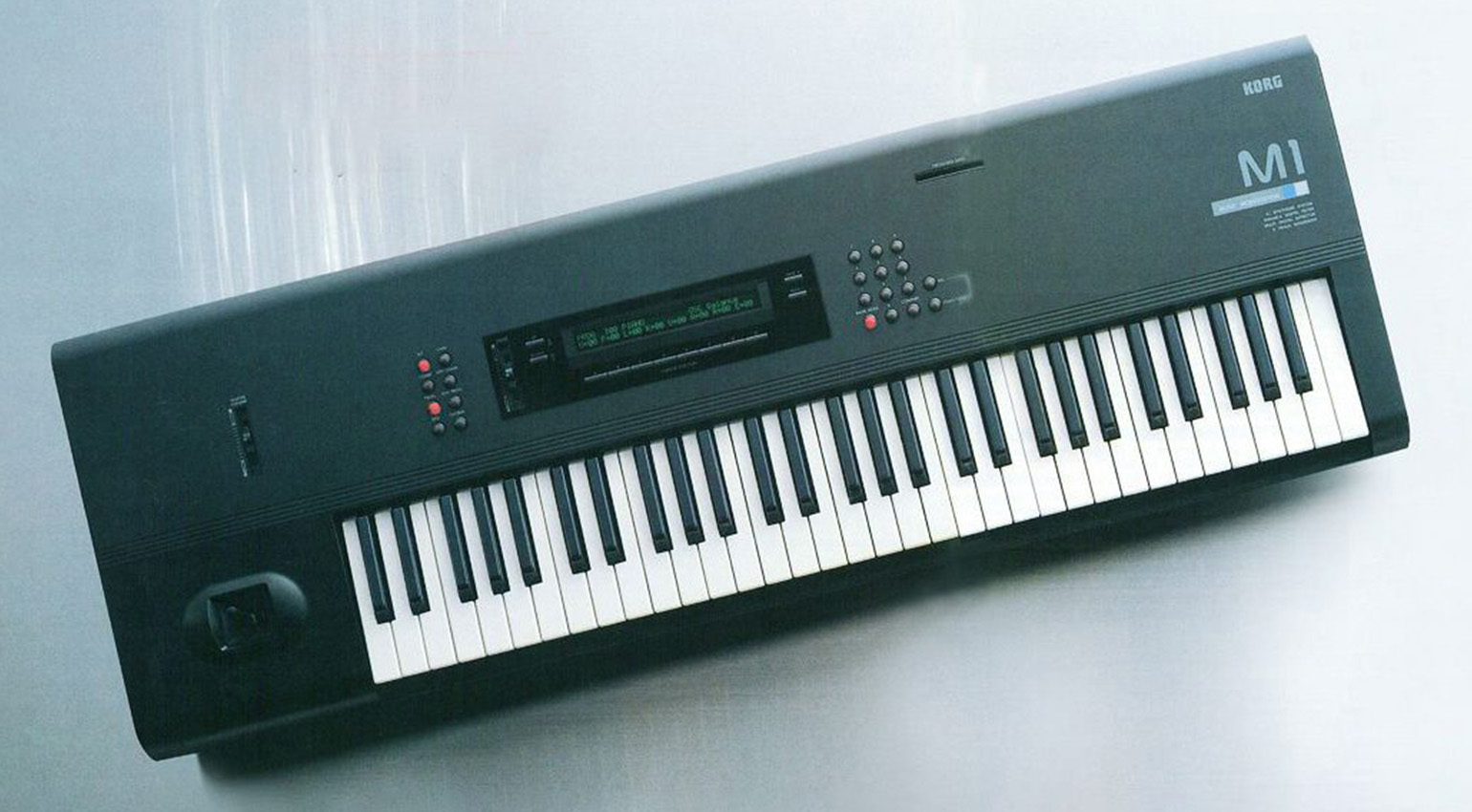
The key to its widespread appeal lay within its title, “Workstation”. Indeed, its remarkable 16-bit PCM sounds and innovative multi-effects section were impressive. Moreover, it introduced drum samples, a groundbreaking feature for a synthesizer, alongside a functional sequencer. By amalgamating these capabilities, Korg created an all-encompassing device that facilitated the entire music production process, from initial sound design to completing a song. It was a groundbreaking invention that quickly became highly sought after, resulting in swift sales.
Korg M1: Welcome To AI Synthesis
Korg’s M1 utilized samples as its foundation, despite not being classified as a traditional sampler. Leveraging insights from their DSS-1 model, Korg developed an innovative sample synthesis system named AI, which stood for Advanced Integrated, though it wasn’t associated with Artificial Intelligence. This system amalgamated multi-sampled waveforms, computer-generated DWGS waves emulating standard waveforms, as well as sampled attack segments reminiscent of the D-50, among other features. Despite the modest 4 MB ROM capacity, Korg successfully compressed these 16-bit sounds. However, users could expand the sound library by purchasing additional ROM cards.
The M1, boasting 16 voices and eight-part multitimbrality, transcended the realm of a mere ROMpler, a category that had yet to be coined. It represented a genuine synthesizer, albeit utilizing sampled sounds as its primary source. Its essence was thoroughly digital, employing ones and zeroes throughout. Featuring two digital oscillators, a digital lowpass filter (albeit non-resonant), and three multipoint digital envelopes, the M1 offered extensive sound manipulation capabilities, although its presets were already esteemed for their quality (refer below for further details).
Korg M1: You Gotta Work
Although the M1 unquestionably boasted excellent sound quality, its workstation capabilities distinguished it from the emerging digital instruments such as the D-50. Notably, it featured a comprehensive multi-effects section equipped with two slots accommodating delay, reverb, chorus, Leslie, distortion, EQ, and various other effects.
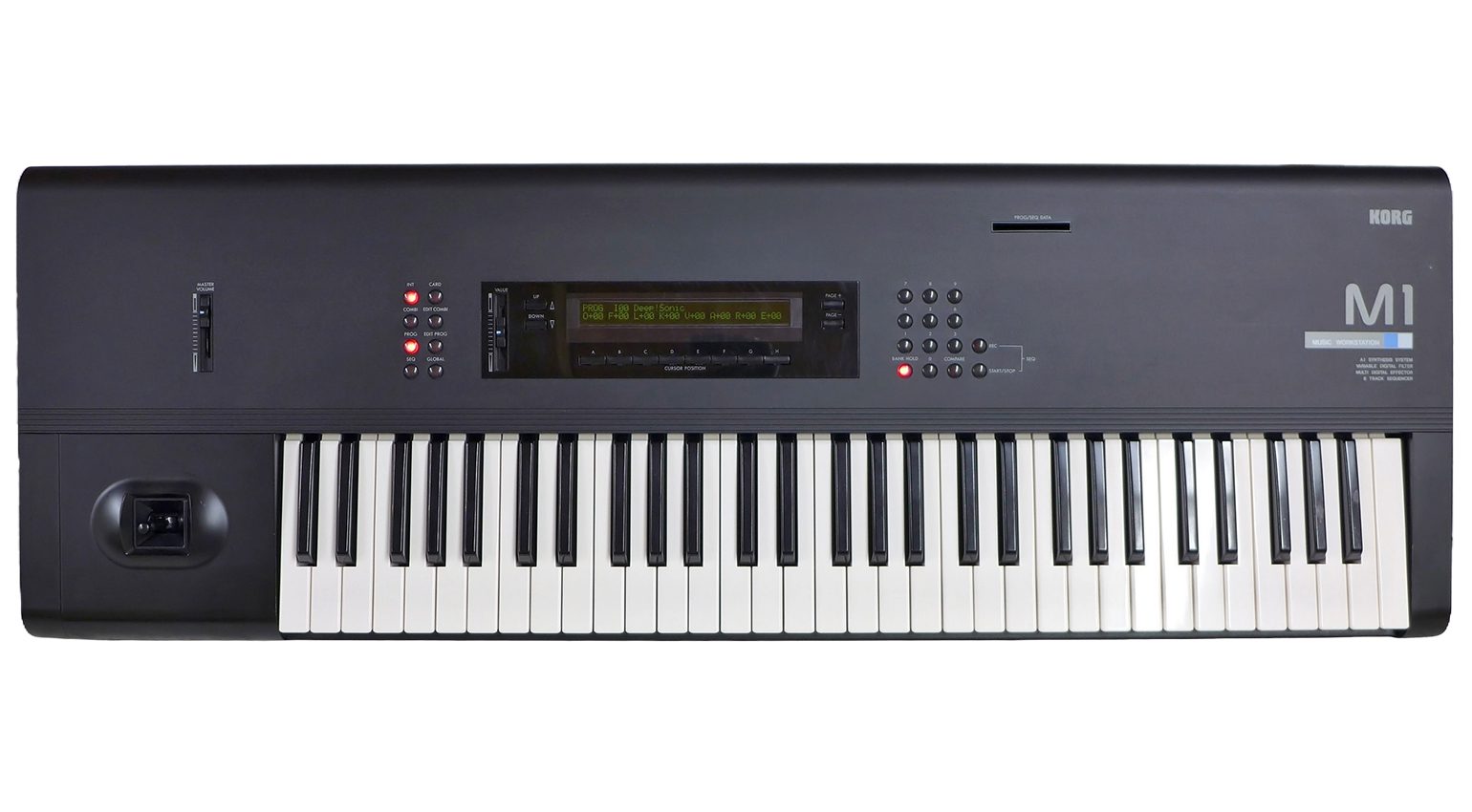
Additionally, it featured a sequencer, albeit with limitations, accommodating only 10 songs and 100 patterns. Contemporary reviews lamented the absence of a floppy drive, although saving to an optional RAM card was possible. Nevertheless, its functionality was sufficient, and the inclusion of drums along with multiple outputs rendered it highly appealing as a comprehensive production solution.
Korg M1: The Sound Of The ‘80s
In order to guarantee the M1 possessed a robust collection of sounds, Korg assembled a top-tier team of sound recorders. Documented in Sound on Sound, this ensemble comprised composers and session musicians who frequently utilized unconventional methods. One notable instance involved capturing the sound produced by blowing over a sizable sake bottle. According to Jack Hotop, a Korg sound programmer, this resulted in a remarkably deep tone surpassing typical blown-bottle samples.
Korg M1: Impact and Subsequent Models
Although Korg has not officially disclosed specific sales figures, it is widely estimated that approximately 250,000 units of the original M1 were sold during its seven-year availability. To put this into context, contrastingly, the original Minimoog Model D saw sales of only around 12,000 units.
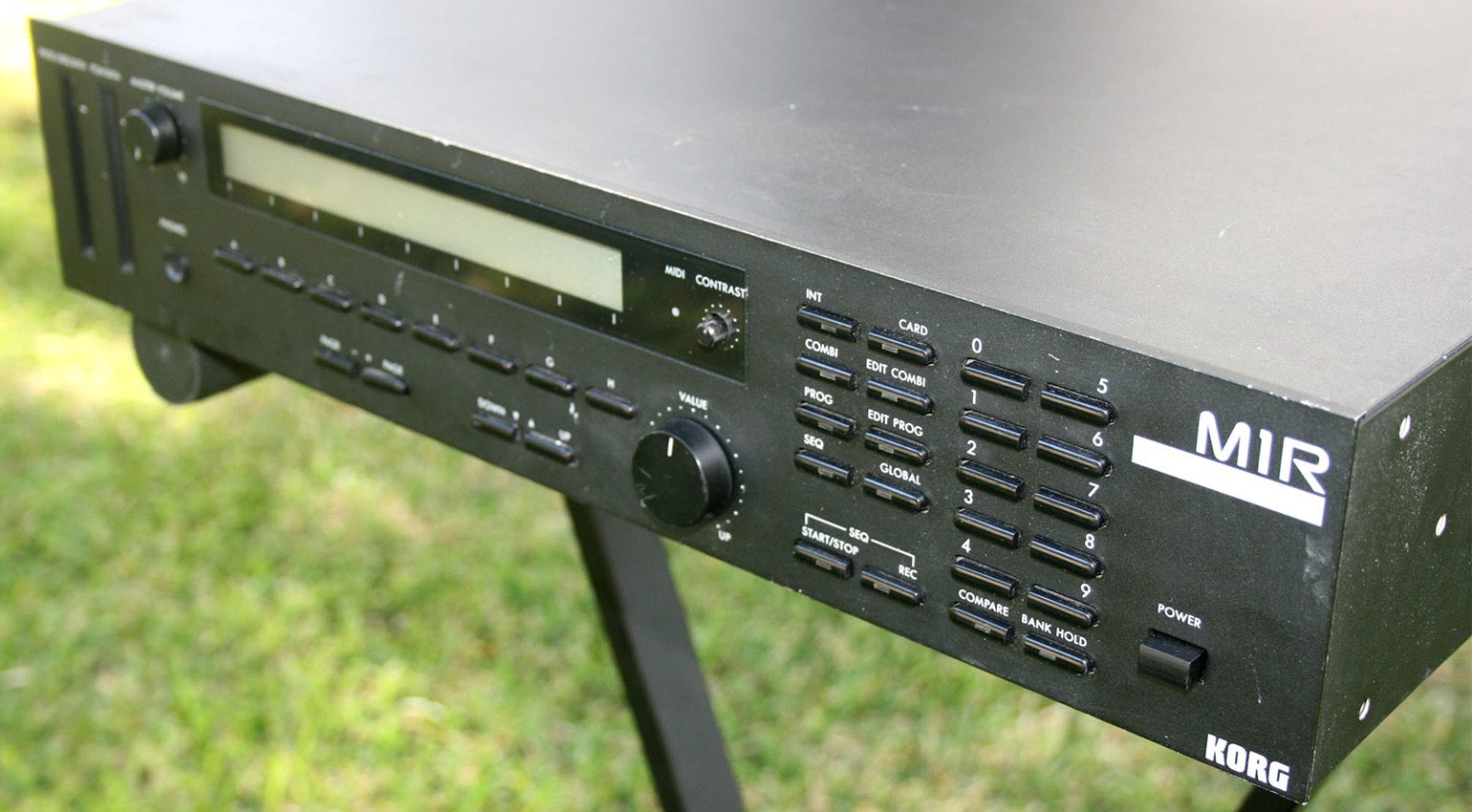
Just as Roland did with the D-50, Korg capitalized on the widespread acclaim of the M1 by introducing several subsequent models. Among these were the M1R and the more affordable M3R rackmount units. Additionally, Korg introduced the M1EX and the M1REX rackmount, incorporating sounds from the T-series, a less favored line succeeding the M1. However, the 01/W proved to be more prosperous, expanding on the M1’s AI synthesis with AI2 technology, integrating additional effects and a distinctive digital waveshaping capability.
Korg M1 In The Modern Age
My connection with the M1 synthesizer has been intricate. When it was released, my musical tastes were focused on industrial bands such as Skinny Puppy and Throbbing Gristle. Realistic acoustic tones and soothing new age pads were the furthest from my interests. Consequently, my musical endeavors shifted towards techno, which wasn’t particularly compatible with the M1. However, over time, I’ve grown fond of Korg’s AI technology and now proudly own an M1R.
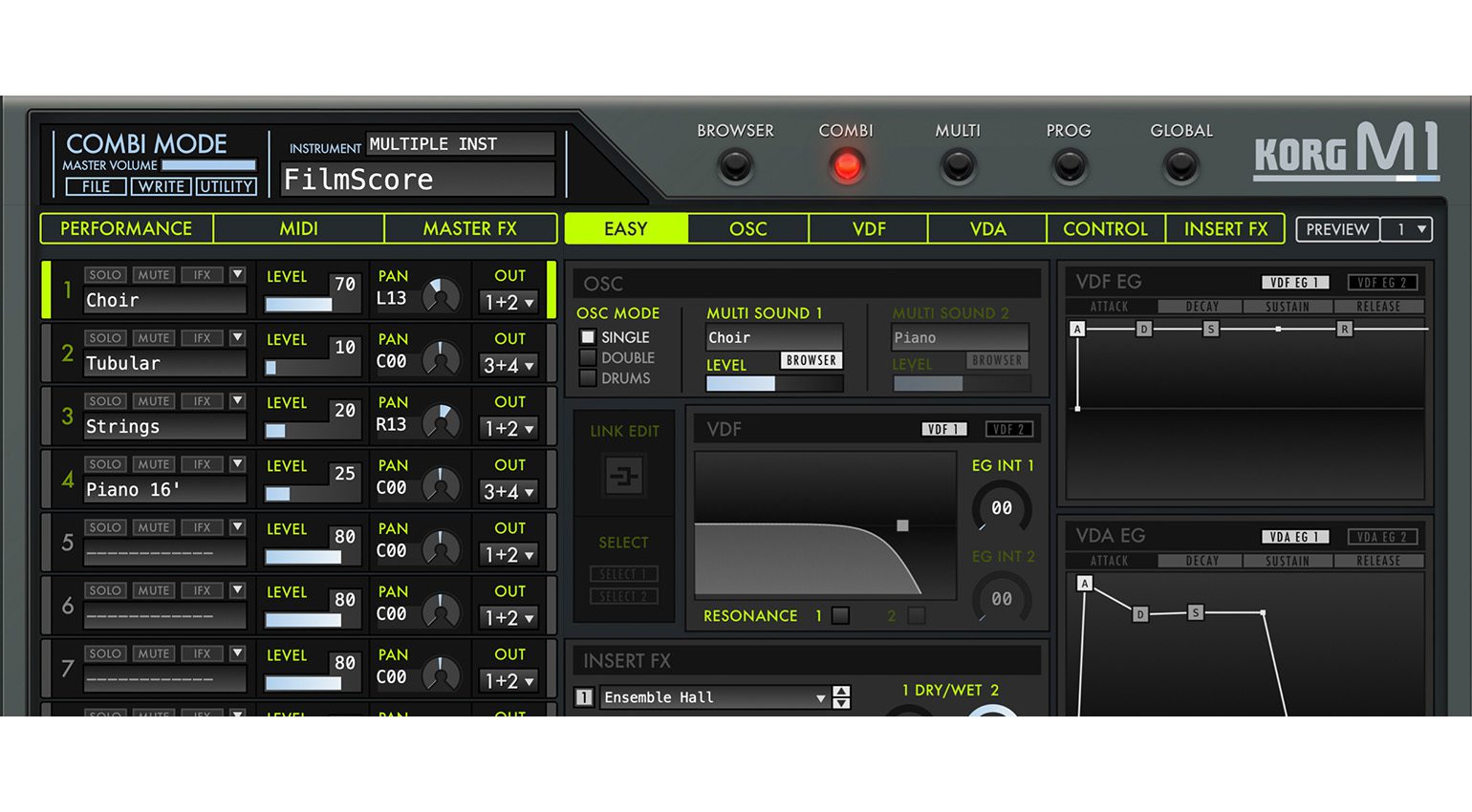
The global community still holds a strong affection for it. The Organ 2 preset remains in high demand, especially with the resurgence of UK garage. Additionally, for electronic music creators who grew up with it, the M1 sounds offer a perfect blend of familiarity and sentimentality.
If you’ve reached the point where owning an M1 is a necessity, you might be taken aback by the current prices for used units (I certainly was). Fortunately, there are several modern alternatives that are much more budget-friendly. Korg offers a software version called the Korg Collection M1, which includes all the original data and sounds from the M1, M1EX, and its 19 expansion cards. Additionally, there’s an iM1 app available for iOS and iPad users.
For those who prefer hardware, although there isn’t a modern synth recreation of the M1 yet (come on, Korg, we’re eagerly awaiting an M1 Volca), the Wavestate does feature some M1 sounds. Furthermore, Korg has made M1 sounds accessible for Nautilus owners.
- Korg M1: Amazona.de
- Korg M1: Wikipedia
- Korg M1R: Syntaur
- Korg M1 V2: Korg
- pb: Plugin Boutique

